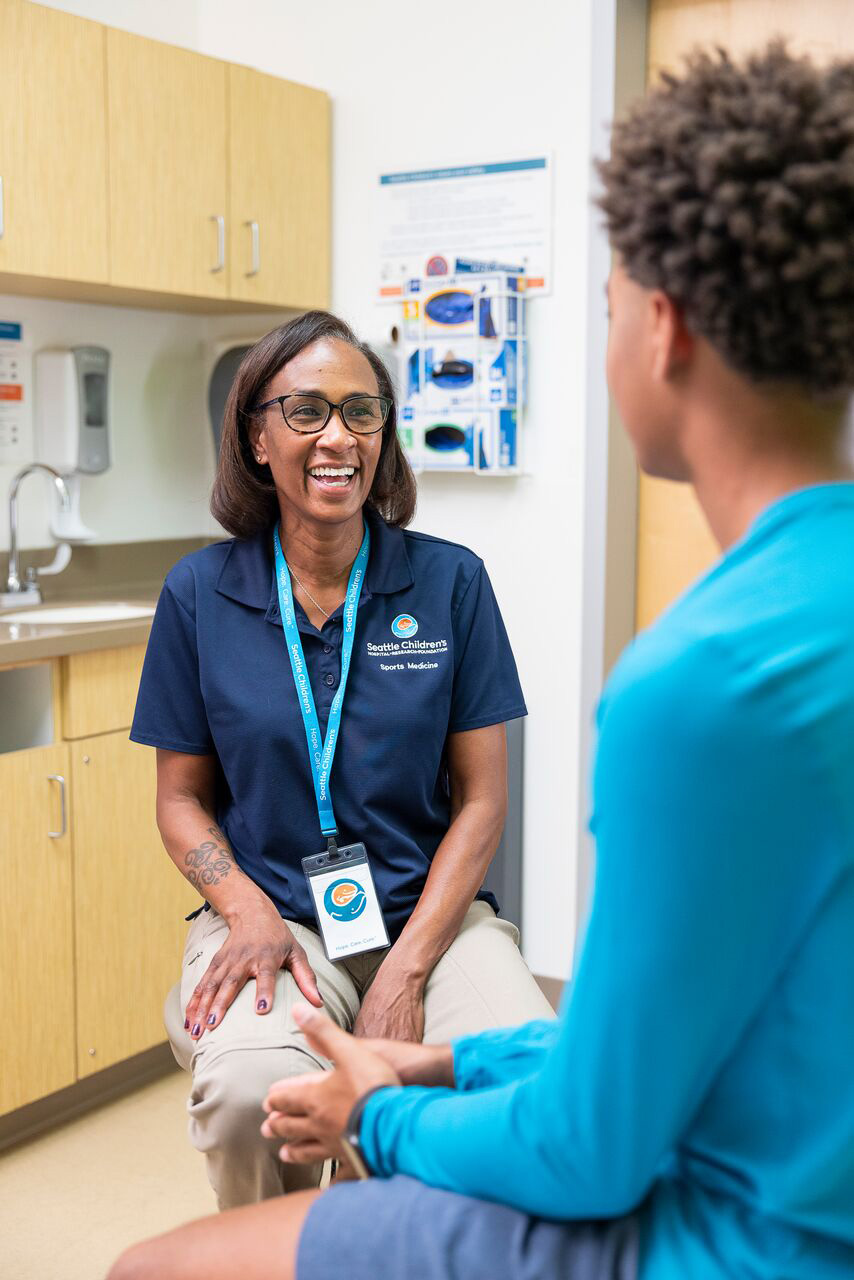Spring Sports Safety – 10 Tips for Staying in the Game
5.14.2024 | Seattle Children's Press Team
Spring has sprung, and with it came spring sports: baseball and softball, tennis, lacrosse, ultimate frisbee, soccer and track and field. Kids and teens dusted off baseball gloves, cleaned off their cleats, dug out that tennis racket and are playing outside! As your child hits the pitch, field or track, Seattle Children’s Orthopedics and Sports Medicine team has a few tips to help keep your child or teen in the game and injury-free.
What are the most common spring sports injuries?
 With the wide array of sports played throughout spring, injuries can vary. Common injuries from throwing and racquet sports include shoulder and elbow injuries. Knee injuries, ankle injuries and shin splints are commonly seen in sports that involve a lot of running.
With the wide array of sports played throughout spring, injuries can vary. Common injuries from throwing and racquet sports include shoulder and elbow injuries. Knee injuries, ankle injuries and shin splints are commonly seen in sports that involve a lot of running.
Concussions can occur in any sport when forceful contact to the head or body occurs. Always report symptoms of a concussion to a coach or athletic trainer and call your child’s doctor as a concussion can be a serious health problem. They require early identification, careful evaluation and specialized management before a child or teen can return to play. Symptoms can include:
- Confusion
- Headache or “pressure in the head”
- Upset stomach or throwing up
- Double or blurry vision
- Sensitivity to light or sound
- Feeling sluggish, hazy, foggy, groggy or more tired than usual
- Trouble focusing or memory problems
- Balance problems or dizziness
- Doesn’t “feel right”
- Grouchy
What do we know about ACL injuries?
Injuries to the ACL are becoming more common in growing athletes. ACL injuries are damage to the anterior cruciate ligament (ACL) in the knee. The ACL is one of four ligaments that keep the knee from wobbling or giving out when you move.
ACL injuries are more common in kids over 12 than in younger kids. Young women are two to eight times more likely to tear their ACLs than boys of the same age, though doctors aren’t exactly sure why. Studies suggest that the problem may be related to anatomy, muscle strength, coordination and hormonal differences.
What is clear is the mechanics involved: When the knee is forced into an unusual position, the ACL and other ligaments can tear, partially, or all the way. ACL tears often occur when children:
- Stop or change direction suddenly
- Twist their knees
- Bend their knees sideways
Seattle Children’s Orthopedics and Sports Medicine team are experts in treating growing athletes. Athletic trainers and physical therapists often work with student athletes to increase their relative core and hamstring strength and practice jumping and landing mechanics to help decrease the likelihood of an ACL injury.
10 sports tips for children and teens
As part of your family’s commitment to spring sports, take a few minutes to review these ten tips from the Orthopedics and Sports Medicine team with your child or teen:
- Get plenty of sleep.
- Avoid skipping meals.
- Have a pre-practice/game snack and re-fuel afterwards.
- Stay hydrated! Make sure you are hydrated going into practice/game and staying hydrated during activity, especially with warmer weather.
- Complete a proper dynamic warm-up and cool down with stretching.
- Listen to your body and know when to stop. If you are tired, feeling ill or something is hurting, listen to your body to prevent a more serious problem from developing.
- Stay conditioned throughout the year by getting physical activity every day. Too much activity, too fast, can lead to an injury.
- Take breaks from year-round sports. To avoid burnout and overuse, vary physical activity throughout the year and take a break from a year-long sport. You can still be active, but give your body parts a break – overuse of the same body part can be bad. Avoid repetitive overuse and possible injury.
- See a health care provider if you experience early signs of an injury. Seeking medical care early can help avoid injuries from becoming more serious. Seeking care early can lead to less time missed.
- Most importantly, have fun! Sports should be fun and enjoyable. If sports become a source of frustration, stress or injury, it may be time to take a break or explore a different activity.
After an injury – what next?
Taking the proper steps to reduce the risk of injury is important, but sometimes things happen unexpectedly.
- Seek early medical evaluation for diagnosis and to begin a treatment plan.
- Physical therapy will likely be an important component of a complete recovery. It is important to follow through with a rehabilitation program to make sure the injury has not just recovered from pain, but that your child’s body is back to functioning at full strength. The goal is to avoid recurrent pain, further injury and to get athletes back in the game, safely.
- A safe and gradual progression is important to prevent recurrent injury.
Encourage your child or teen to take the time to warm up properly, listen to their body and speak up if it doesn’t feel right.